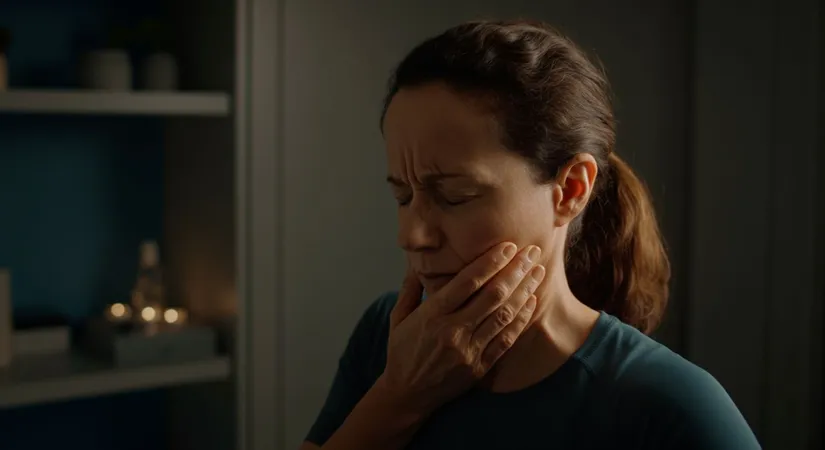Discover the Secrets of Modern Medical Aesthetics and Acupuncture
Discover how understanding pain through the Gate Control Theory informs breakthrough pain management techniques within medicine and aesthetics.
In today’s rapidly evolving medical landscape, the understanding of pain – how we perceive it and control it – is undergoing a transformation. The Gate Control Theory of Pain, a leading theory in pain management, provides profound insights into how we can modulate pain through innovative methods. This has not only enhanced therapeutic procedures in treating chronic pain but also paved new avenues in aesthetic medicine, ensuring patient comfort and satisfaction.<\/p>
Understanding the Gate Control Theory of Pain
The Interplay of Nerve Signals and Pain Perception
The Gate Control Theory of Pain revolutionizes our understanding of pain perception by highlighting the intricate interplay between nerve signals and the central nervous system. This theory suggests that pain is not merely a direct result of nerve activation but is modulated by neural mechanisms that act like gates, either amplifying or dampening the pain signals that reach the brain.
For instance, when you stub your toe, the initial sharp pain is a result of nerve signals being sent to the brain. However, if you rub the area, the sensation of touch can help close the 'gate,' reducing the perception of pain. This modulation is crucial in understanding how different stimuli can alter pain perception.
Applications in Pain Management Techniques
The Gate Control Theory has significant implications for developing pain management techniques. By understanding how to manipulate these neural gates, healthcare providers can devise strategies to alleviate chronic pain. Techniques such as transcutaneous electrical nerve stimulation (TENS) and acupuncture are based on this principle, aiming to block pain signals through alternative sensory inputs.
Moreover, this theory supports the use of cognitive-behavioral therapy (CBT) in chronic pain relief, where psychological strategies are employed to alter pain perception. This holistic approach underscores the importance of addressing both the physical and psychological aspects of pain.
Key Benefits of Gate Control Theory in Pain Management
- Provides a framework for understanding pain modulation, enhancing treatment strategies.
- Facilitates the development of non-invasive pain relief techniques, such as TENS.
- Encourages a holistic approach to pain management, integrating psychological and physical therapies.
Steps to Implement Gate Control Theory in Chronic Pain Relief
- Identify the specific pain pathways and triggers in the patient.
- Apply appropriate sensory modulation techniques, such as TENS or acupuncture.
- Integrate cognitive-behavioral strategies to address psychological aspects of pain.

Exploring Pain Management Techniques for Chronic Pain
Innovative Approaches to Chronic Pain Relief
Chronic pain sufferers often require a multifaceted approach to manage their symptoms effectively. One innovative method is the use of nerve modulation treatments, which aim to alter the way pain signals are processed by the nervous system. These treatments can include techniques such as spinal cord stimulation, which uses electrical impulses to interfere with pain signal transmission.
Another promising technique is the application of non-invasive pain relief methods in aesthetic settings. For example, cryotherapy, which involves exposing the body to extremely cold temperatures, has been shown to reduce inflammation and pain perception. This method is gaining popularity not only for its pain-relieving properties but also for its potential aesthetic benefits, such as improved skin tone and reduced cellulite.
Holistic Pain Perception Techniques
Holistic approaches to pain management emphasize the integration of mind and body therapies. Techniques such as mindfulness meditation and yoga have been shown to significantly reduce chronic pain by promoting relaxation and enhancing pain modulation. These practices encourage individuals to focus on their breathing and body awareness, which can help shift attention away from pain.
Furthermore, incorporating cognitive-behavioral strategies can empower patients to alter their pain perception. By changing negative thought patterns and developing coping strategies, individuals can experience a reduction in pain intensity and an improvement in their overall quality of life.
Key Techniques for Effective Pain Management
- Spinal cord stimulation for altering pain signal pathways.
- Cryotherapy for reducing inflammation and enhancing aesthetics.
- Mindfulness and yoga for holistic pain perception improvement.
Steps to Implement Holistic Pain Management Techniques
- Assess the patient's pain triggers and lifestyle factors.
- Introduce non-invasive treatments like cryotherapy and mindfulness.
- Develop a personalized plan incorporating cognitive-behavioral strategies.

How Gate Control Theory Explains Pain Perception
The Psychological Influence on Pain Perception
The Gate Control Theory of Pain not only highlights the physical aspects of pain modulation but also emphasizes the psychological influence on pain perception. This theory suggests that emotional and cognitive factors can significantly alter how pain is experienced, providing a deeper understanding of pain management techniques.
For example, stress and anxiety can open the 'gates,' intensifying pain perception. Conversely, positive emotions and relaxation techniques can help close these gates, reducing pain. This insight is crucial for developing effective chronic pain relief strategies that incorporate psychological elements.
Psychological Techniques for Pain Relief
- Mindfulness meditation to enhance relaxation and reduce stress-related pain.
- Cognitive-behavioral therapy to reframe negative thoughts and perceptions of pain.
- Biofeedback to gain control over physiological responses to pain.
Steps to Integrate Psychological Techniques in Pain Management
- Evaluate the patient's emotional and cognitive state related to pain.
- Introduce mindfulness and relaxation exercises to manage stress.
- Implement cognitive-behavioral strategies to alter pain perception.
Innovative Pain Relief Techniques Inspired by Gate Control Theory
Advanced Laser Treatments and Minimally Invasive Surgeries
Modern aesthetic medicine has embraced the Gate Control Theory of Pain to develop cutting-edge pain relief techniques. Advanced laser treatments, for instance, utilize precise wavelengths to target nerve endings, effectively modulating pain perception. This method not only reduces discomfort during procedures but also accelerates healing by minimizing tissue damage.
Minimally invasive surgeries have also been revolutionized by this theory. By employing smaller incisions and refined techniques, these surgeries limit nerve disruption, thereby reducing postoperative pain. This approach enhances patient recovery and satisfaction, highlighting the importance of nerve signal manipulation in pain management.
Key Features of Modern Pain Relief Techniques
- Utilization of specific laser wavelengths for targeted nerve modulation.
- Minimized tissue damage through refined surgical techniques.
- Enhanced recovery and reduced postoperative pain.
Steps to Implement Advanced Pain Relief Techniques
- Assess the patient's specific pain pathways and treatment needs.
- Choose appropriate laser or surgical techniques for optimal nerve modulation.
- Monitor recovery and adjust pain management strategies as needed.
Innovative Pain Relief Techniques Inspired by Gate Control Theory
Enhancing Patient Recovery with Advanced Techniques
Frequently Asked Questions
What is the Gate Control Theory of Pain?
How do nerve modulation treatments help in chronic pain relief?
What are some non-invasive pain relief techniques used in aesthetics?
How do holistic pain perception techniques work?
What role does cognitive-behavioral therapy play in pain management?
Discover the Art of Healthy Beauty with estethica! Call Now for Your Free Consultation.
📞 Speak with Our Experts Today!